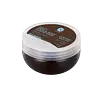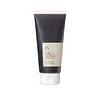What's inside
What's inside
 Key Ingredients
Key Ingredients

 Benefits
Benefits

 Concerns
Concerns

 Ingredients Side-by-side
Ingredients Side-by-side

Sodium Chloride 55%
MaskingGlycerin
HumectantCoffea Arabica Seed Powder 8%
AbrasiveWater
Skin ConditioningHoney
HumectantButylene Glycol
Humectant1,2-Hexanediol
Skin ConditioningC12-14 Pareth-12
EmulsifyingCellulose Gum
Emulsion StabilisingPropolis Extract
Skin ConditioningCocos Nucifera Fruit Extract
EmollientCamellia Sinensis Leaf Extract
AntimicrobialXanthan Gum
EmulsifyingOrbignya Oleifera Seed Oil
EmollientOlea Europaea Fruit Oil
MaskingSerum Albumin
HumectantGlycine Soja Oil
EmollientTocopherol
AntioxidantCarica Papaya Seed Oil
HumectantKaolin
AbrasiveSodium Chloride 55%, Glycerin, Coffea Arabica Seed Powder 8%, Water, Honey, Butylene Glycol, 1,2-Hexanediol, C12-14 Pareth-12, Cellulose Gum, Propolis Extract, Cocos Nucifera Fruit Extract, Camellia Sinensis Leaf Extract, Xanthan Gum, Orbignya Oleifera Seed Oil, Olea Europaea Fruit Oil, Serum Albumin, Glycine Soja Oil, Tocopherol, Carica Papaya Seed Oil, Kaolin
Glycerin
HumectantWater
Skin ConditioningSucrose
HumectantCoffea Arabica Seed Powder
AbrasiveMethylpropanediol
Solvent1,2-Hexanediol
Skin ConditioningBetaine
HumectantCellulose Acetate
Diglycerin
HumectantDecyl Glucoside
CleansingDisodium Cocoamphodiacetate
CleansingSodium C14-16 Olefin Sulfonate
CleansingCarbomer
Emulsion StabilisingTromethamine
BufferingSodium Chloride
MaskingXanthan Gum
EmulsifyingSodium Polyacrylate
AbsorbentButylene Glycol
HumectantEthylhexylglycerin
Skin ConditioningMagnesium Aluminum Silicate
AbsorbentCamellia Sinensis Leaf Extract
AntimicrobialSaccharomyces Ferment Filtrate
HumectantCamellia Sinensis Leaf Water
MaskingHexylene Glycol
EmulsifyingSodium Hyaluronate
HumectantQuartz
AbrasiveTocopherol
AntioxidantSchisandra Chinensis Fruit Extract
Skin ConditioningHelianthus Annuus Seed Oil
EmollientGlycerin, Water, Sucrose, Coffea Arabica Seed Powder, Methylpropanediol, 1,2-Hexanediol, Betaine, Cellulose Acetate, Diglycerin, Decyl Glucoside, Disodium Cocoamphodiacetate, Sodium C14-16 Olefin Sulfonate, Carbomer, Tromethamine, Sodium Chloride, Xanthan Gum, Sodium Polyacrylate, Butylene Glycol, Ethylhexylglycerin, Magnesium Aluminum Silicate, Camellia Sinensis Leaf Extract, Saccharomyces Ferment Filtrate, Camellia Sinensis Leaf Water, Hexylene Glycol, Sodium Hyaluronate, Quartz, Tocopherol, Schisandra Chinensis Fruit Extract, Helianthus Annuus Seed Oil
 Reviews
Reviews

Ingredients Explained
These ingredients are found in both products.
Ingredients higher up in an ingredient list are typically present in a larger amount.
1,2-Hexanediol is a synthetic liquid and another multi-functional powerhouse.
It is a:
- Humectant, drawing moisture into the skin
- Emollient, helping to soften skin
- Solvent, dispersing and stabilizing formulas
- Preservative booster, enhancing the antimicrobial activity of other preservatives
Butylene Glycol (or BG) is used within cosmetic products for a few different reasons:
Overall, Butylene Glycol is a safe and well-rounded ingredient that works well with other ingredients.
Though this ingredient works well with most skin types, some people with sensitive skin may experience a reaction such as allergic rashes, closed comedones, or itchiness.
Learn more about Butylene GlycolCamellia Sinensis Leaf Extract is derived from the leaves of the tea plant. Black tea, green tea, and oolong tea are all harvested from this plant.
This ingredient has many skin benefits:
This ingredient contains polyphenols, a strong antioxidant. Antioxidants help fight off molecules that damage skin cells.
On top of that, the antioxidants in green tea neutralize free-radicals from the sun. This gives the skin some extra UV protection, but should not replace sunscreen.
Many components of tea have anti-inflammatory properties.
Polyphenols and L-theanine help soothe the skin and reduce irritation. The caffeine in Camellia Sinensis Leaf Extract helps calm inflamed blood vessels.
Other compounds found in tea include: Vitamin Bs, linoleic acid, magnesium, calcium, iron, and zinc.
Research has shown both drinking Camellia Sinensis Leaf Tea and applying it to the skin can help boost skin elasticity and hydration. Studies also show using tea extract may reduce sebum, or oil, production.
Learn more about Camellia Sinensis Leaf ExtractCoffea Arabica Seed Powder is created by grinding down the beans of the coffee plant. (Coffee beans and seeds are the same thing).
Like other powders, it can have exfoliating properties due to the texture.
Glycerin is already naturally found in your skin. It helps moisturize and protect your skin.
A study from 2016 found glycerin to be more effective as a humectant than AHAs and hyaluronic acid.
As a humectant, it helps the skin stay hydrated by pulling moisture to your skin. The low molecular weight of glycerin allows it to pull moisture into the deeper layers of your skin.
Hydrated skin improves your skin barrier; Your skin barrier helps protect against irritants and bacteria.
Glycerin has also been found to have antimicrobial and antiviral properties. Due to these properties, glycerin is often used in wound and burn treatments.
In cosmetics, glycerin is usually derived from plants such as soybean or palm. However, it can also be sourced from animals, such as tallow or animal fat.
This ingredient is organic, colorless, odorless, and non-toxic.
Glycerin is the name for this ingredient in American English. British English uses Glycerol/Glycerine.
Learn more about GlycerinChances are, you eat sodium chloride every day. Sodium Chloride is also known as table salt.
This ingredient has many purposes in skincare: thickener, emulsifier, and exfoliator.
You'll most likely find this ingredient in cleansers where it is used to create a gel-like texture. As an emulsifier, it also prevents ingredients from separating.
There is much debate on whether this ingredient is comedogenic. The short answer - comedogenic ratings don't tell the whole story. Learn more about comegodenic ratings here.
The concensus about this ingredient causing acne seems to be divided. Research is needed to understand if this ingredient does cause acne.
Scrubs may use salt as the primary exfoliating ingredient.
Learn more about Sodium ChlorideTocopherol (also known as Vitamin E) is a common antioxidant used to help protect the skin from free-radicals and strengthen the skin barrier. It's also fat soluble - this means our skin is great at absorbing it.
Vitamin E also helps keep your natural skin lipids healthy. Your lipid skin barrier naturally consists of lipids, ceramides, and fatty acids. Vitamin E offers extra protection for your skin’s lipid barrier, keeping your skin healthy and nourished.
Another benefit is a bit of UV protection. Vitamin E helps reduce the damage caused by UVB rays. (It should not replace your sunscreen). Combining it with Vitamin C can decrease sunburned cells and hyperpigmentation after UV exposure.
You might have noticed Vitamin E + C often paired together. This is because it is great at stabilizing Vitamin C. Using the two together helps increase the effectiveness of both ingredients.
There are often claims that Vitamin E can reduce/prevent scarring, but these claims haven't been confirmed by scientific research.
Learn more about TocopherolWater. It's the most common cosmetic ingredient of all. You'll usually see it at the top of ingredient lists, meaning that it makes up the largest part of the product.
So why is it so popular? Water most often acts as a solvent - this means that it helps dissolve other ingredients into the formulation.
You'll also recognize water as that liquid we all need to stay alive. If you see this, drink a glass of water. Stay hydrated!
Learn more about WaterXanthan gum is used as a stabilizer and thickener within cosmetic products. It helps give products a sticky, thick feeling - preventing them from being too runny.
On the technical side of things, xanthan gum is a polysaccharide - a combination consisting of multiple sugar molecules bonded together.
Xanthan gum is a pretty common and great ingredient. It is a natural, non-toxic, non-irritating ingredient that is also commonly used in food products.
Learn more about Xanthan Gum